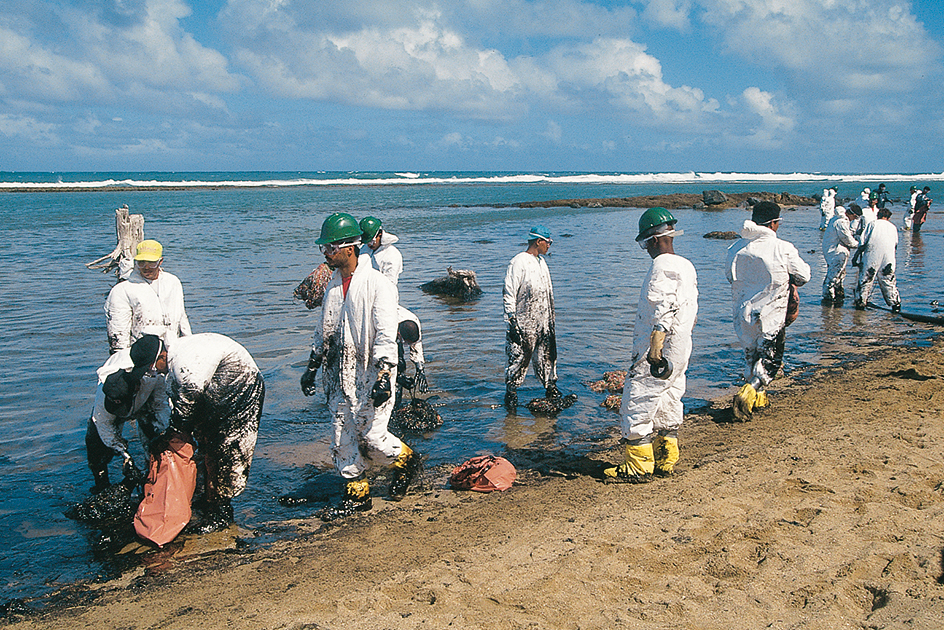Ocean pollution includes trash, chemicals, and sewage introduced into the ocean by human activity. Such pollution may result from activity on land or at sea. Ocean pollution can harm animals in the ocean and alter their habitat. It can cause illness or death when animals eat debris or are exposed to harmful chemicals. In addition, ocean pollution can harm humans when they swim in polluted waters or eat contaminated seafood.

Marine debris
consists of garbage dumped directly into the ocean or carried there by waterways. Such debris can injure animals or make them ill. It can also bury marine habitat.
The vast majority of marine debris consists of small pieces of plastic from common objects, such as plastic bottles or bags. Plastic litter on land can be carried to the ocean by water or wind. Because plastic does not degrade (break down) for many years, it quickly accumulates in the ocean. Plastics can be toxic to ocean life. Tiny pieces are easily eaten by small marine animals. Larger animals can become entangled in plastic, hindering their movement. Sea turtles eat plastic bags, mistaking them for a favorite food, jellyfish. The bags can block their digestive track. If the turtles, or other animals, cannot pass the bags through their digestive system, they can starve.
Other common marine debris includes commercial fishing nets and traps. These items become debris if lost or discarded. Nets can entangle and kill many kinds of marine animals, including larger animals such as sea turtles, sharks, and whales.
In the northern Pacific Ocean, a large circular current known as a gyre sweeps plastic, nets, and other debris into a central area. Although there are some larger items, much of the debris is small floating plastic particles. This area is sometimes called the Great Pacific Garbage Patch. Some scientists suspect that garbage patches exist in the center of other gyres found throughout the world’s oceans.
Chemical pollution
can come from a single large event, such as an oil spill. But it also comes from many small sources, such as oil leaked by automobiles and carried by rain and waterways to the ocean. Only a small portion of oil in the ocean comes from major spills. However, large spills do impact long stretches of beach and are devastating to populations of some animals, such as many seabirds. Industrial chemicals, such as flame retardants and pesticides, may also reach the ocean and harm animal development.
Fertilizers and nutrients used in agriculture can run into the oceans, triggering algal blooms. Such blooms are rapid growths of algae in coastal waters. They deplete the oxygen needed to sustain other marine life, creating areas called dead zones. One of the world’s largest dead zones lies in the Gulf of Mexico around the mouth of the Mississippi River. This area receives huge amounts of nutrient pollution from the vast Mississippi River watershed.
Chemical ocean pollution can also result from air pollution. For example, automobiles and coal-burning power plants release harmful particles into the atmosphere. These particles can eventually settle in the water, carrying with them chemicals such as mercury. Mercury is particularly troublesome because it does not break down and collects in animals. Mercury can accumulate in tiny plankton, which are eaten by fish, which may ultimately be eaten by humans.
Sewage
is an important kind of ocean pollution because it carries disease-causing microbes. When it rains, sewage is often discharged into harbors and beaches. Towns may monitor bacteria levels in the water to alert beachgoers when the water is polluted with sewage.
